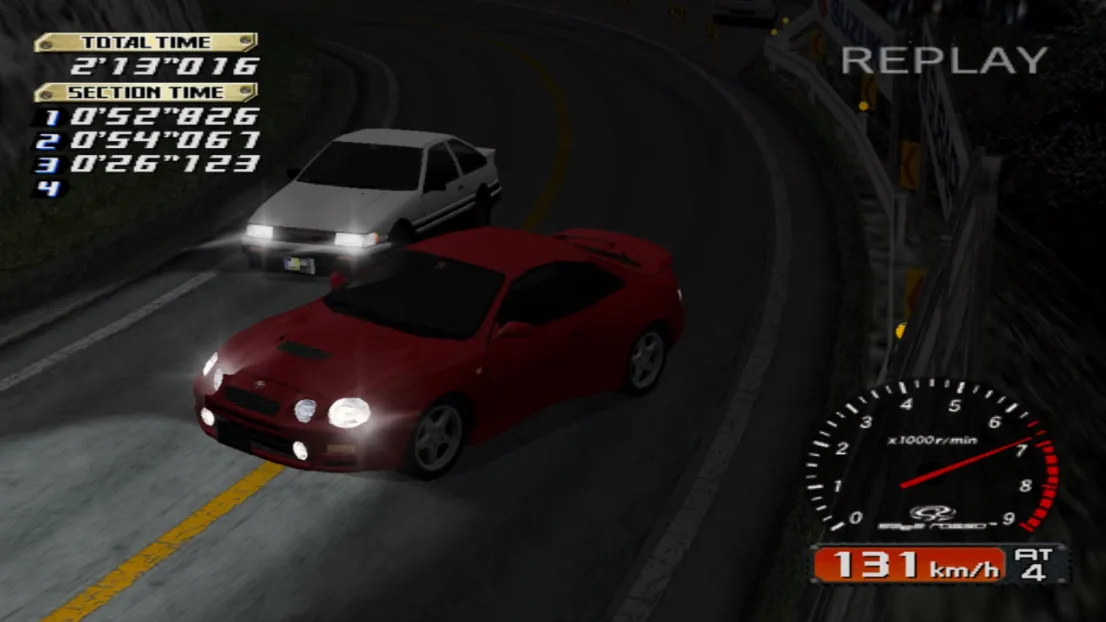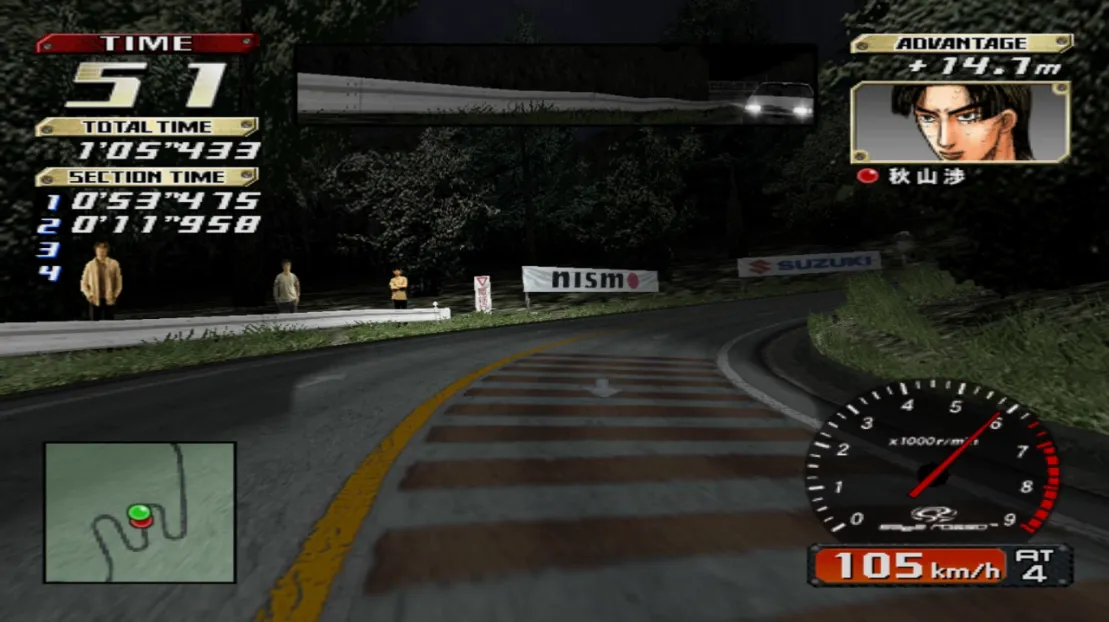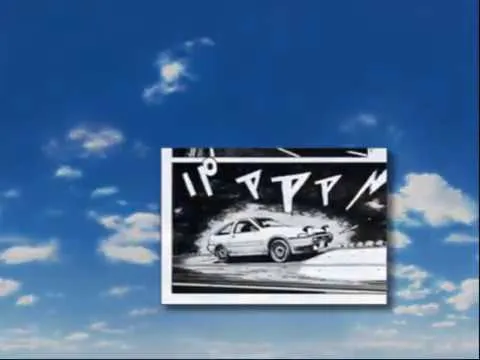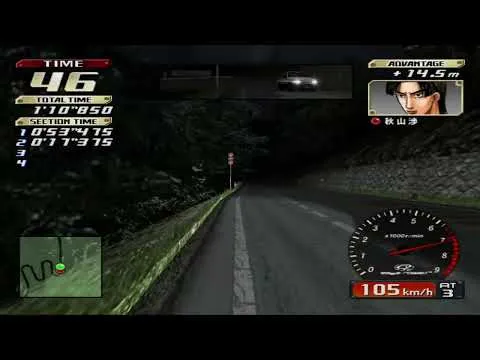

It is hard to imagine that you haven't heard of Initial D nowadays, not only because of how much more mainstream anime is (and how easier it is to access through the Internet), but also because of two notable things: The eurobeat music which is heavily used in the anime through the races, and the memes that have spawned from it, from the famous "KANSEI DORIFTO" clip of the first season (which, yes, means inertia drift), to memes using the eurobeat music for anything remotely crazy with cars racing (you might have a feeling of Deja Vu from hearing that lol), and even eurobeat remixes of other music often having one of the characters having a seriously concentrated face while driving (which again, also comes from the anime), or is Takumi next to his Toyota Trueno AE86 but with someone else's head on top of it. I guess that just like a good portion of many memes on the internet (though not all of them), stuff from Initial D becoming a meme speaks about how influential (and cool) it is.
...but anyways, as you might have inferred by now, this is a game based off the manga/anime which has you street racing with many characters from it, including the protagonist himself (Takumi) as well as his rivals through the course of the anime, and more importantly, has a selection of eurobeat music used in the anime to pump your tires with adrenaline while playing. Special Stage is actually based on Initial D Arcade Stage Ver.2 (because of course I would be talking about an arcade racer), which was more like a patch rather than a sequel to the first arcade game, and features 6 tracks to drive on at day or at night, and while the first two are closed circuits, the rest are mountain roads that you have to drive uphill or downhill from start to finish, no laps.

The modes avaliable are Legend of the Street, Time Attack and Quest mode; the first one was the main mode in the arcade game as you chose a track and who to race with, having different conditions on each race and essentially having the goal of beating everybody to clear the game...and face none other than Bunta Fujiwara as the "extra final boss" (which in the anime is stated that was a legendary drive before...and here is EXTREMELY difficult to beat). Time Attack is also self-explantatory and was present in the arcade game as well, but Quest/Story mode is exclusive to this game and it actually follows the plot and events of the manga, playing as Takumi and his AE86 while competing on the many races he has.

The game was already pretty cool with the unique one-on-one racing you have in that you need to take corners the best way you can and even hold the opponent's car behind your bumper so that they don't get ahead of you, but this is made cooler not only by the music and the game looking pretty good, but also in that an addition made to this version was that every racer will have voiced lines before and after every race, as well as saying stuff while racing them. Now, while this game is only avaliable in Japanese (the arcade version had an English version, but not this one), the game is still very playable as the arcade and there is a walkthrough online that translates both the dialogue and mission requeriments in the Story mode. Being a PS2 game, it might be easier to setup PCSX2 to emulate as well instead of figuring out the stuff needed for the arcade version.
As a plus from being a home version as well, you can save and load replays of any races you've raced (and chose to save after finishing them), which is a very cool feature that you would only normally see in the arcade version by finishing a race, choosing to not keep playing then wait for the attract mode to roll. While the game can be challenging because of the sensitivity of the stick (or getting used to playing with the D-Pad, if you do want to do that), its definitely worth trying from the variety of cars, twists and turns on every track, and the awesome sense of speed that's only made better by the classic eurobeat music that's featured here. Even as someone that played much more the arcade versions, this game is still a pretty good ride for anyone willing to get into this kind of mountain racing but without having to feel you need an actual license to handle it like in more realistic racers.

Spanish translation with DeepL. All screenshots were captured by myself.
Español
Es difícil imaginar que no hayas oído hablar de Initial D hoy en día, no sólo por lo extendido que está el anime (y lo fácil que es acceder a él a través de Internet), sino también por dos cosas notables: La música eurobeat que se utiliza mucho en el anime a través de las carreras, y los memes que han surgido a partir de ella, desde el famoso clip "KANSEI DORIFTO" de la primera temporada (que, sí, significa deriva por inercia), hasta los memes que utilizan la música eurobeat para cualquier cosa remotamente loca con las carreras de coches (puede que tengas una sensación de Deja Vu al escuchar eso lol), e incluso remezclas de eurobeat de otras músicas que a menudo tienen a uno de los personajes con una cara muy concentrada mientras conduce (que de nuevo, también viene del anime), o es Takumi junto a su Toyota Trueno AE86 pero con la cabeza de otra persona encima. Supongo que al igual que una buena parte de muchos memes en internet (aunque no todos), que cosas de Initial D se conviertan en meme habla de lo influyente (y genial) que es.
...pero en fin, como ya habrás deducido, se trata de un juego basado en el manga/anime que te hace correr con muchos de sus personajes, incluido el propio protagonista (Takumi) y sus rivales a lo largo del anime, y lo que es más importante, tiene una selección de música eurobeat utilizada en el anime para inflar tus neumáticos de adrenalina mientras juegas. El Special Stage se basa en realidad en el Initial D Arcade Stage Ver.2 (porque por supuesto estaría hablando de un arcade de carreras), que era más bien un parche que una secuela del primer juego de arcade, y cuenta con 6 pistas para conducir de día o de noche, y mientras las dos primeras son circuitos cerrados, el resto son carreteras de montaña que tienes que conducir cuesta arriba o cuesta abajo de principio a fin, sin vueltas.

Los modos disponibles son Leyenda de la Calle, Contrarreloj y Modo Quest; el primero era el modo principal en el juego arcade ya que elegías una pista y con quién correr, teniendo diferentes condiciones en cada carrera y esencialmente teniendo el objetivo de vencer a todos para despejar el juego... y enfrentarte nada menos que a Bunta Fujiwara como "jefe final extra" (que en el anime se dice que era una conducción legendaria antes... y aquí es EXTREMADAMENTE difícil de vencer). El Time Attack también es autoexplicativo y estaba presente en el juego arcade también, pero el modo Quest/Story es exclusivo de este juego y realmente sigue la trama y los eventos del manga, jugando como Takumi y su AE86 mientras compite en las muchas carreras que tiene.

El juego ya era bastante genial con las únicas carreras de uno contra uno que tienes en las que tienes que tomar las curvas de la mejor manera posible e incluso mantener el coche del oponente detrás de tu parachoques para que no se adelanten a ti, pero esto se hace más genial no sólo por la música y el juego que se ve bastante bien, sino también en que una adición hecha a esta versión fue que cada corredor tendrá líneas de voz antes y después de cada carrera, así como decir cosas mientras se compite. Aunque este juego sólo está disponible en japonés (la versión arcade tenía una versión en inglés, pero no ésta), el juego sigue siendo muy jugable como el arcade y hay un tutorial en línea que traduce tanto los diálogos como los requisitos de las misiones en el modo Historia. Al ser un juego de PS2, podría ser más fácil configurar PCSX2 para emular también en lugar de averiguar las cosas necesarias para la versión arcade.
Además, al tratarse de una versión doméstica, puedes guardar y cargar las repeticiones de las carreras que hayas disputado (y que hayas elegido guardar después de terminarlas), lo cual es una característica muy interesante que normalmente sólo se ve en la versión arcade al terminar una carrera, elegir no seguir jugando y esperar a que salga el modo atraer. Aunque el juego puede ser un reto por la sensibilidad del stick (o por acostumbrarse a jugar con el D-Pad, si quieres hacerlo), merece la pena probarlo por la variedad de coches, las curvas y los giros en cada pista, y la impresionante sensación de velocidad que sólo mejora con la clásica música eurobeat que aparece aquí. Incluso como alguien que ha jugado mucho más a las versiones arcade, este juego sigue siendo un buen paseo para cualquiera que esté dispuesto a entrar en este tipo de carreras de montaña pero sin tener que sentir que necesitas una licencia real para manejarlo como en los corredores más realistas.

Traducción al español hecha con DeepL. Todas las fotos capturadas por mí.

